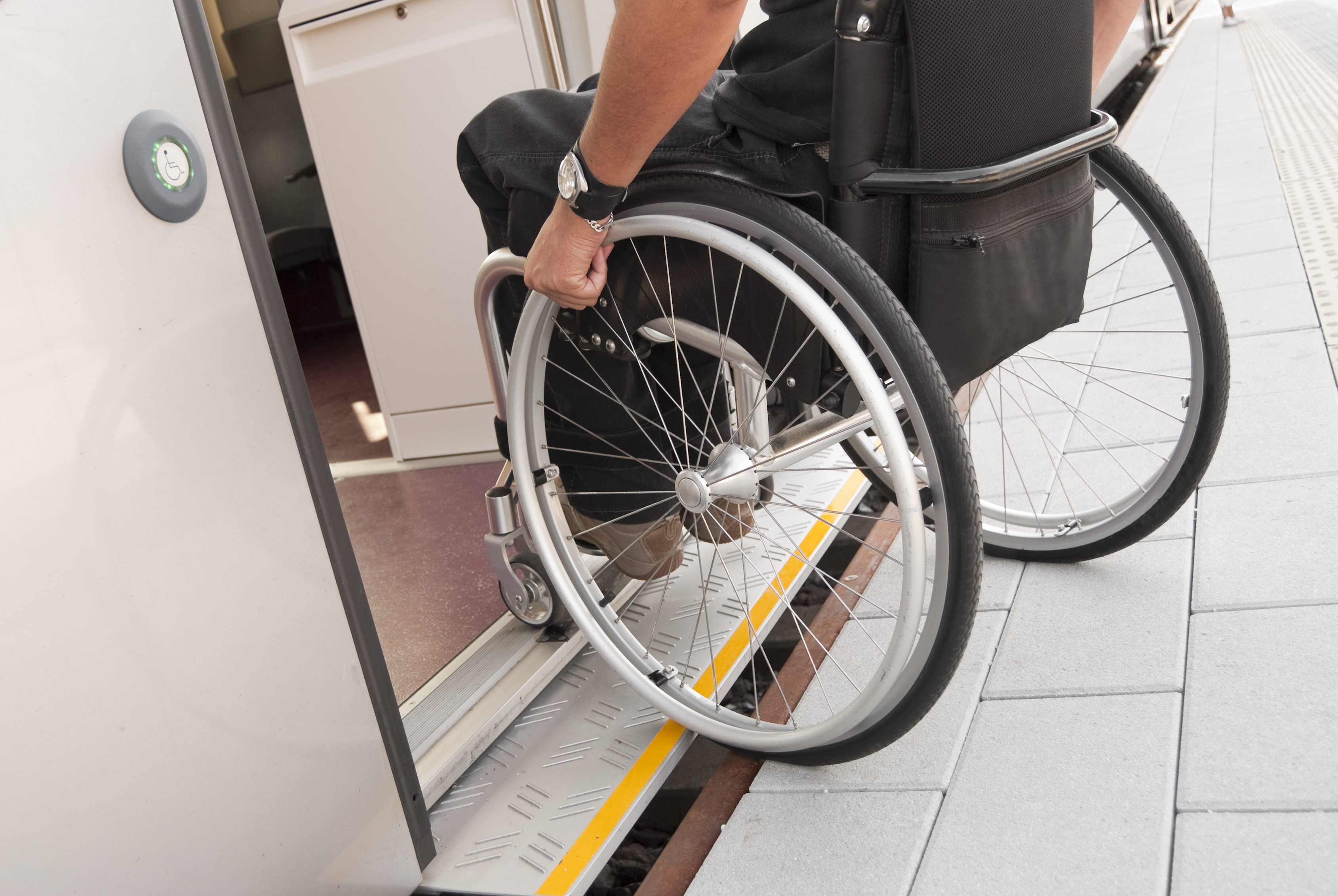S
ome disabled people may avoid taking the train because they worry about their ability to get on or off. They may also worry about where they can store their equipment and the comfort of their ride. Responsible railways have already taken steps to make train travel easier for the disabled, although these passengers need to make arrangements prior to their trips.
Ramps and Lifts
Most train companies such as Amtrak provide ramps for wheelchairs and scooters when the train door sets below the platform. On an even surface, bridge plates are used to cover the gap between the platform and the train door, a dangerous space, particularly for disabled passengers. Amtrak also employs mobile lifts to aid passengers when the train door is above the platform. Better technology has made these lifts smaller and easier to maneuver, lessening boarding disruption and putting less pressure on the rider.
Automatic Steps
Automatic steps are helpful for those with limited mobility but who are not in a wheelchair. The gap between the platform and the train can be hazardous for all passengers, particularly those reliant on canes, crutches, and walkers. For instance, those boarding trains in Dusseldorf, Germany, will use these steps, which unfold on their own at each stop, allowing passengers to board quickly and easily. Once everyone is on board, they retract into the floor of the train.
Automatic Doors
Many train stations have automatic external doors, which greatly aid mobility challenged passengers. They are wide enough to accommodate mobility devices and allow disabled passengers to enter a station at their own pace without getting hit by a closing door.
In addition, some trains have automatic doors, which means disabled passengers can get on and off trains with little or no aid from the station staff. These doors also automatically close, ensuring that passengers are safely on board before the train moves.
New technologies are being developed to better aid disabled travelers and to make travel more convenient for everyone. More and better automation is on the horizon, but disabled passengers are already finding travel easier and safer on many train lines.



